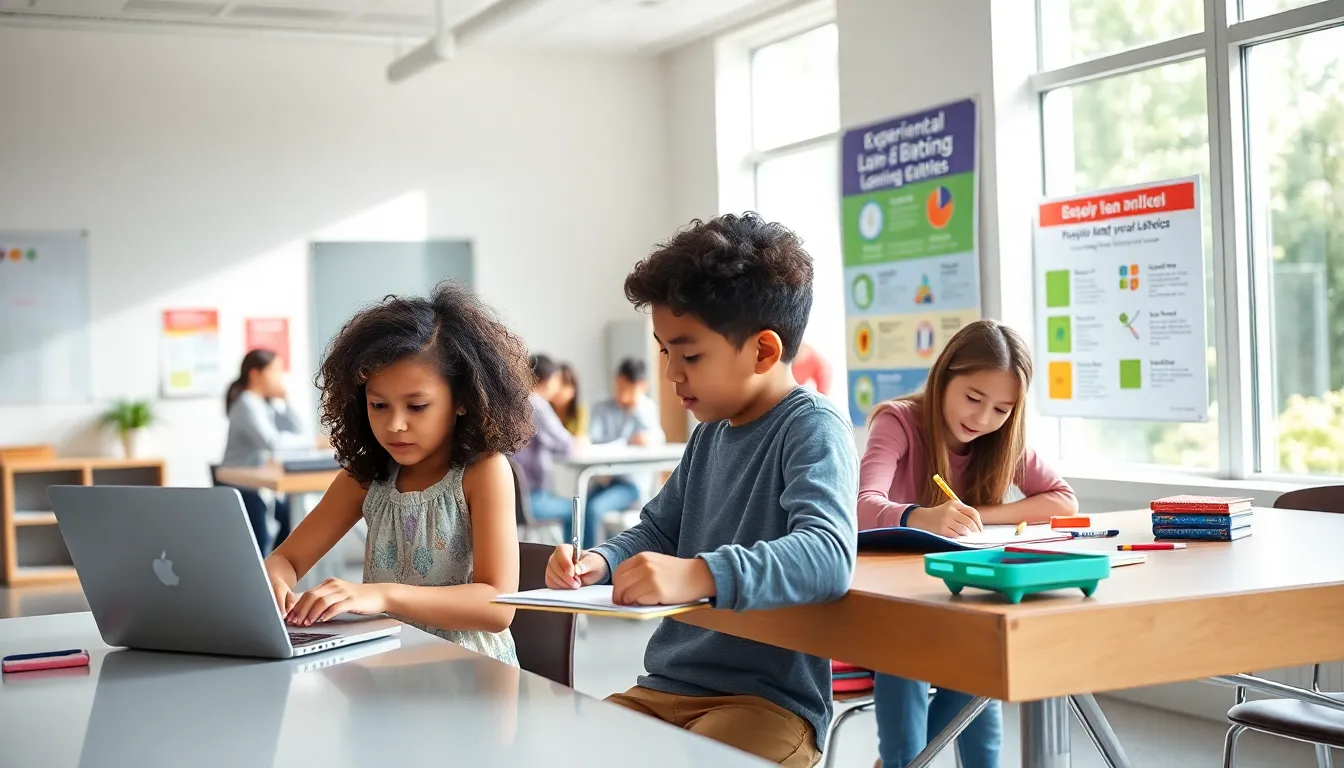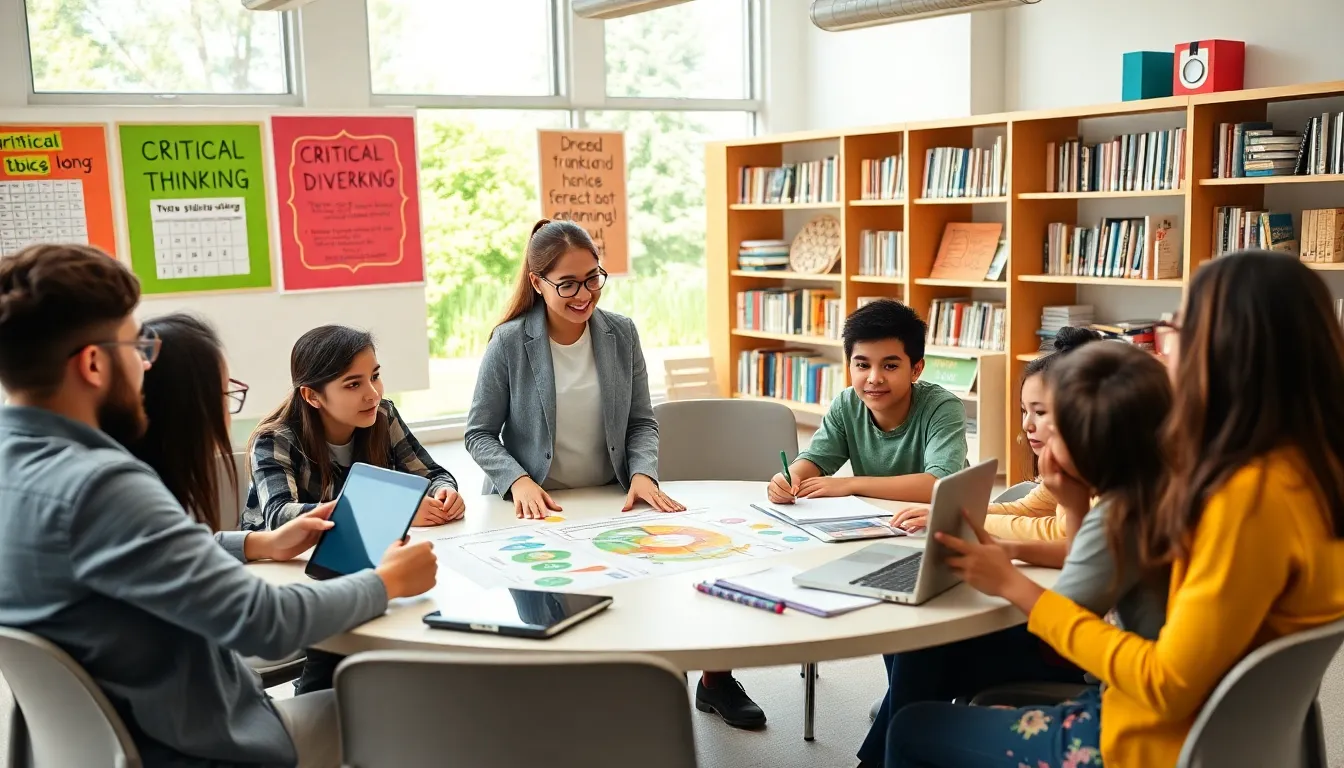Have you ever wondered what lies beyond the traditional classroom? Welcome to the world of alternative education, a realm where learning takes on diverse forms that cater to individual needs. Forget the chalkboards and strict schedules. Imagine an educational landscape filled with creativity, flexibility, and a splash of fun – because learning should never feel like pulling teeth. In this text, we’ll unpack the meaning of alternative education and guide you through its fascinating components, all while keeping a smile on your face. So buckle up: it’s going to be an enlightening ride.
Table of Contents
ToggleUnderstanding Alternative Education

At its core, alternative education refers to any educational method that diverges from the traditional, mainstream schooling approach. This could mean everything from charter schools and homeschooling to experiential learning and independent study programs. The beauty of alternative education lies in its adaptability, aiming to meet the diverse needs of students who may not thrive in traditional environments. It’s like a buffet of learning options where students can select what resonates best with them, rather than being stuck with a one-size-fits-all menu.
Alternative education empowers learners by offering various pathways to acquire knowledge, fostering skills that go beyond academic performance. Teachers often become facilitators, guiding students through tailored educational experiences. The focus shifts from rote memorization to critical thinking, creativity, and real-world application, making learning more relevant and engaging.
History and Evolution of Alternative Education
The roots of alternative education can be traced back to the early 20th century, when progressive educators like John Dewey challenged the conventional methods of teaching. Dewey believed that education should be student-centered and focused on experiential learning. This shift sparked the creation of various educational movements, like Montessori and Waldorf education, which prioritize hands-on learning and holistic development.
Throughout the decades, alternative education has evolved in response to societal changes. The 1960s and 70s saw a surge in interest as the counterculture movement embraced non-traditional approaches. Schools sprung up that prioritized values, creativity, and community. Today, alternative education continues to adapt, incorporating technology and global perspectives to foster inclusive, relevant learning experiences.
Key Characteristics of Alternative Education
Alternative education is marked by several defining characteristics:
- Flexibility: Curriculums can be adapted to fit individual learning styles, allowing students to learn at their own pace.
- Student-Centered Learning: The focus is on the learner, promoting autonomy in their educational journey.
- Holistic Approach: Alternative education often emphasizes students’ social, emotional, and intellectual growth, rather than solely academic achievement.
- Diverse Learning Environments: Settings can vary dramatically, from outdoor classrooms to home-based learning spaces, fostering engagement and creativity.
- Community Involvement: These programs often emphasize community connections, encouraging students to apply their knowledge outside the classroom.
These characteristics showcase how alternative education strives to create an enriching environment, allowing students to thrive through various modalities.
Types of Alternative Education Programs
There are numerous types of alternative education programs tailored to different needs:
- Montessori Schools: Prioritize self-directed, hands-on learning in multi-age classrooms.
- Waldorf Schools: Focus on holistic education, integrating academics with arts and practical skills.
- Charter Schools: These publicly funded schools operate with more flexibility than traditional schools, often experimenting with innovative teaching methods.
- Homeschooling: Families design their educational programs to suit their children’s unique learning preferences and needs.
- Online Learning: Virtual schools and platforms offer flexible, diverse curricula that can be accessed from anywhere.
Eventually, each type of alternative education caters to students’ varied learning styles, ensuring that every learner can find their educational niche.
Advantages of Alternative Education
Alternative education offers a plethora of benefits:
- Personalized Learning: Tailored strategies address individual learning styles, promoting academic success and engagement.
- Increased Motivation: When students engage with material relevant to their interests, intrinsic motivation skyrockets.
- Focus on Real-Life Skills: Many alternative programs emphasize practical skills that prepare students for real-world challenges.
- Strengthened Student-Teacher Relationships: Smaller class sizes and individualized attention create stronger bonds, fostering a supportive learning environment.
- Adaptability: Programs can easily incorporate changes in response to feedback or evolving educational needs.
These advantages illustrate how alternative education prioritizes the student experience, putting them at the forefront of their learning journeys.
Challenges Associated with Alternative Education
But, alternative education isn’t without its hurdles:
- Limited Resources: Many alternative programs may struggle with funding and resources, hindering their ability to provide a comprehensive education.
- Lack of Standardization: The absence of standardized testing can create uncertainty about the quality and effectiveness of alternative education.
- Socialization Concerns: Some worry that students in alternative settings may not interact socially enough with peers.
- Misconceptions: There’s often a stigma associated with alternative education, leading some to believe it’s less rigorous than traditional schooling.
Navigating these challenges requires perseverance and innovation, but many alternative education programs are successfully addressing these concerns.
Future Trends in Alternative Education
Looking ahead, several trends are shaping the future of alternative education:
- Integration of Technology: As technology advances, blended learning environments incorporating online resources are becoming increasingly popular.
- Focus on Lifelong Learning: Alternative education will continue to emphasize skills necessary for our rapidly changing world, fostering adaptability and resilience.
- Emphasis on Social Justice Education: There’s a growing movement toward curriculum reform that encourages critical thinking about social issues and fosters empathy.
- Increased Collaboration: Partnerships between alternative and traditional schools may lead to knowledge sharing, eventually enhancing educational practices across the board.
These trends suggest that alternative education will keep evolving, ensuring that it meets the needs of today’s learners while preparing them for the future.


